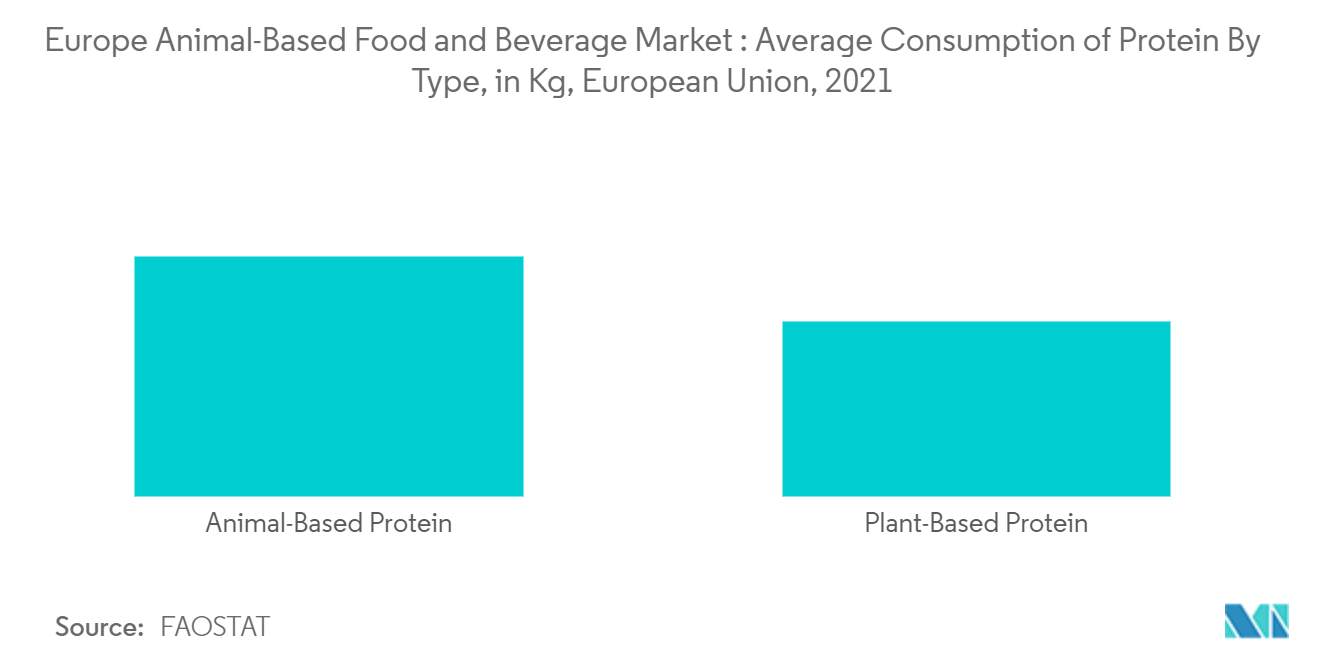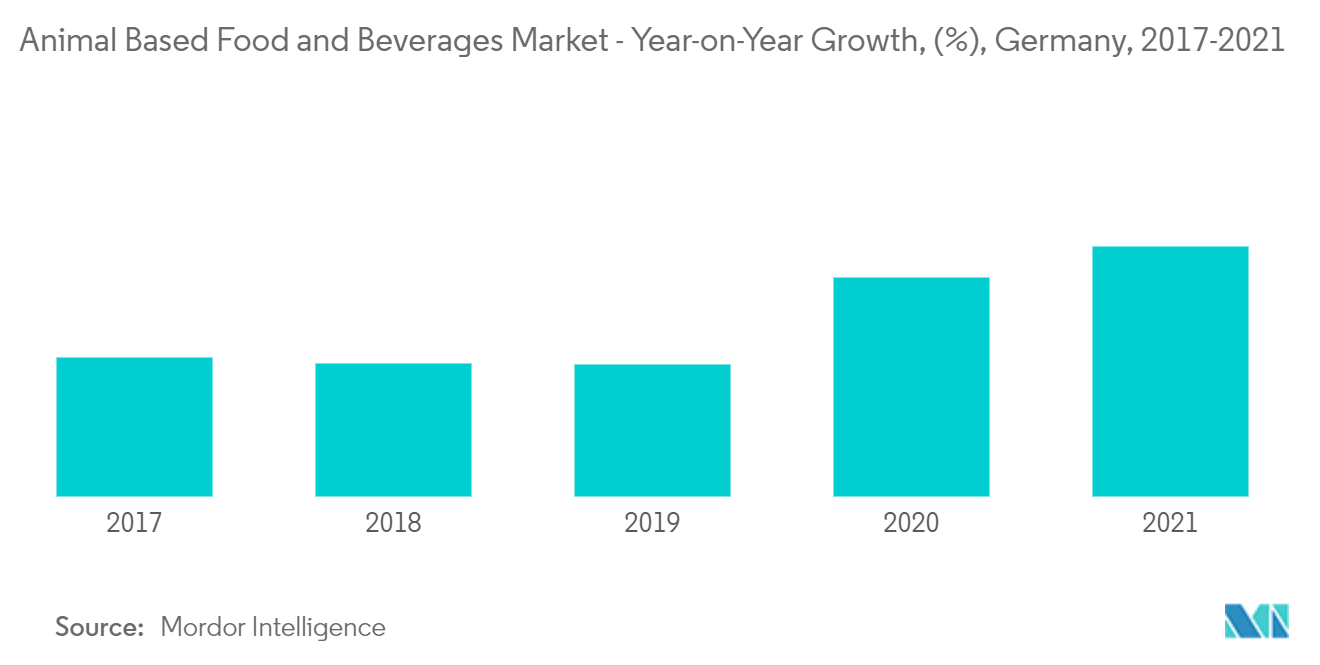Market Trends of Europe Animal-Based Food and Beverage Industry
This section covers the major market trends shaping the Europe Animal Based Food & Beverage Market according to our research experts:
Increasing Demand for High-Value Animal Protein
According to Eurostat, the annual meat production, such as bovine, poultry, pigs, and sheep, has constantly been increasing in the European market. European Union pork production grew in the first five months of 2021, according to data from the European Union Commission. The European Union produced 1.88 million tonnes of pork in May, down 1% from April but up 5% (96,600 tonnes) year-on-year. 19.87 million clean pigs were slaughtered during the month, 5% (949,500 head) more than a year ago. This is due to the growing demand for protein-rich food, primarily driven by the rise in health consciousness among consumers, globally. The increase in the demand for animal protein and the growing consumer preference for low-fat and high-protein diets have led to a remarkable rise in the consumption of animal protein across Europe. This trend has been driven by the influence of ethnic cuisines across Africa, Asia-Pacific, and especially the Middle East being consumed in Europe. Therefore, this is further increasing the demand for animal protein products in Europe. The growing consumption of processed poultry and pork meat is expected to drive the demand for processed meat in Europe.

Germany Accounted for the Largest Market
The German meat market is already a saturated one as over the past 30 years consumption has slightly declined at times and has largely stagnated overall, at around 60 kilograms per capita per year. In 2021, there has been 53.5 kilograms per capita in which Pork remaining the favourite variety and accounting for 31 kilograms, followed by poultry (13.1 kilograms) and beef (9.4 kilograms). Consumption of sheep, goat and other meat (including venison) amounts to less than 2 kilograms. Also, hams are one of Germany's most favourite meat products, both the air-dried, cured, prosciutto-like 'raw ham' (Rohschinken) and the boiled, cured, pink 'cooked ham' (Kochschinken). Pertaining to high production levels of milk and other dairy products, Germany has been accountable for 20,9% of total milk deliveries in 2021. Moreover, Germany also depicts self-sufficiency rate of 133% as far as dairy segment is concerned.


